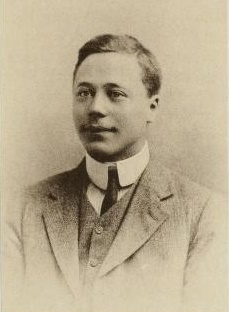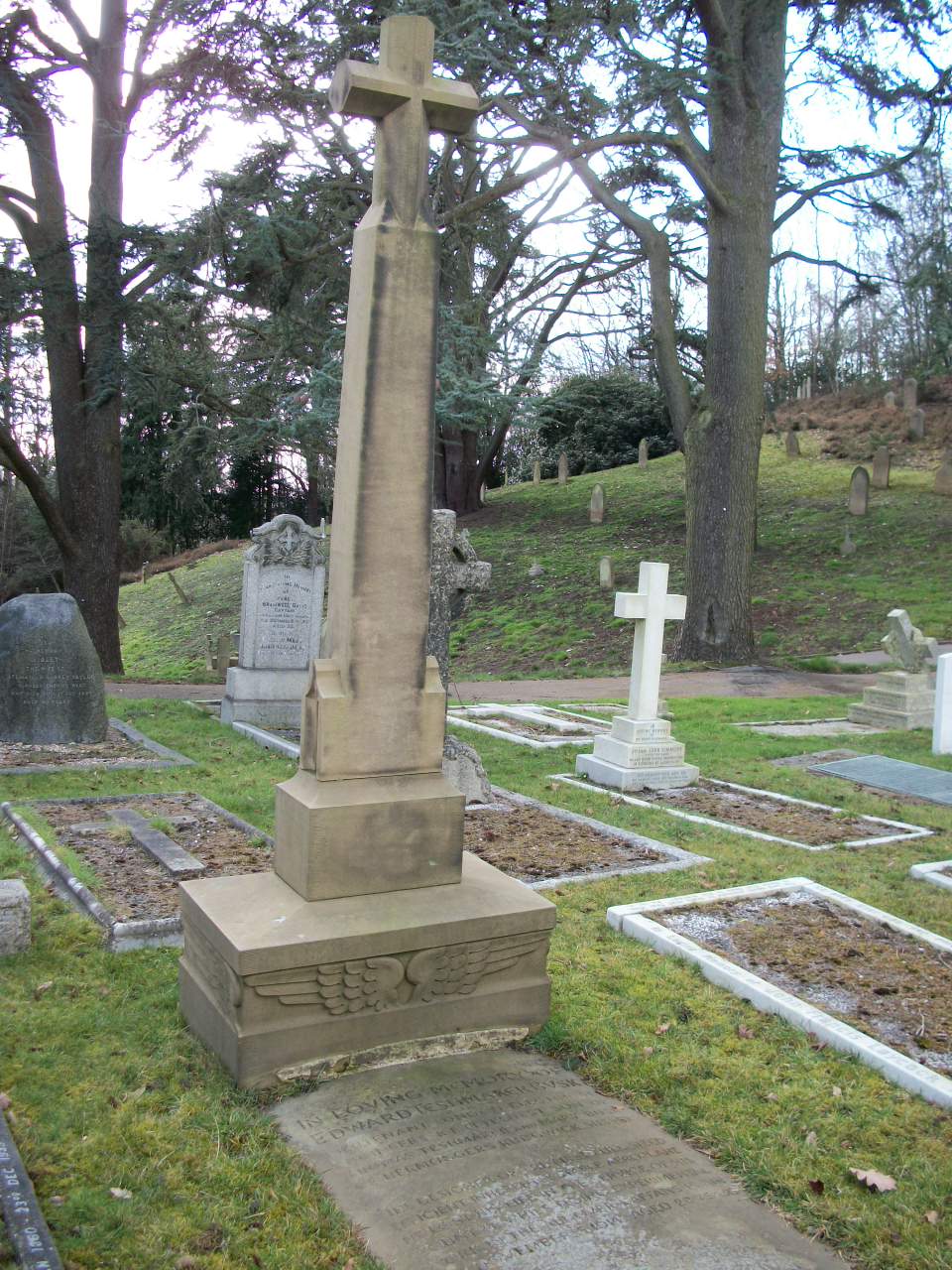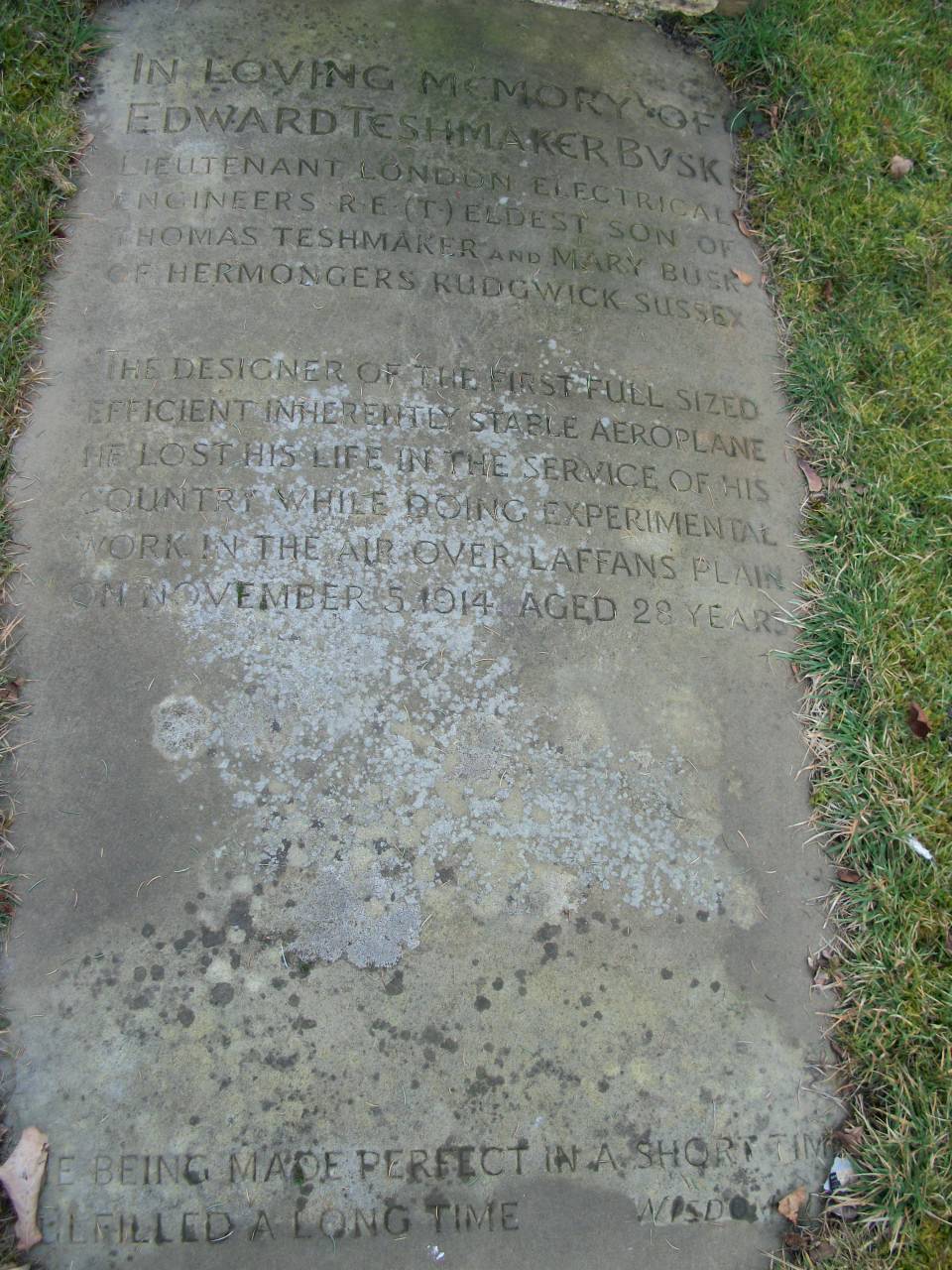EDWARD TESHMAKER BUSK
Regiment & Unit/Ship
Royal Engineers
Date of Death
Died 05 November 1914
Age 28 years old
Buried or commemorated at
ALDERSHOT MILITARY CEMETERY
AH. 321.
United Kingdom
Country of Service
United Kingdom
Additional Info
Son of Mary Busk, of 6, Wadham Gardens, Hampstead, London, and the late Thomas T. Busk.
https://www.cwgc.org/find-records/find-war-dead/casualty-details/359187/EDWARD%20TESHMAKER%20BUSK/
https://www.forces-war-records.co.uk/records/1383232/lieutenant-edward-teshmaker-busk-british-army-royal-engineers/
https://www.forces-war-records.co.uk/records/22623663/lieutenant-edward-teshmaker-busk-london-electrical-engineers/
https://www.forces-war-records.co.uk/librarydocument/document/2410/?page=67&SearchQuery=busk&fromNameSearch=32001 (Roll of Honour)
Suggested edit: For Bio: Extract from The Roll of Honour, A Biographical record of all members of His Majesty's Naval and Military Forces who have fallen in the War, by the Marquis de Ruvigny, Volume I., The Standard Art Book Company, Ltd, December, 1916:
BUSK, EDWARD TESHMAKER, Lieutenant, London Electrical Engineers (T.F.), son of Thomas Teshmaker Busk, of Fords Grove, Winchmore Hill, and Hermongers, Rudgwick, co. Sussex, M.A., J.P., by his wife, Mary, daughter of Nathaniel Brindley Acworth, of the Hook, co. Herts, J.P., Chairman of Petty Sessions; b. Fords Grove afsd., 8 March, 1886; educated Bilton Grange, Rugby, Harrow (Mr. Marshall's House, 1900-04) and King's College (Foundation Scholar), Cambridge, where he secured a 1st Class in Part 1 of the Mechanical Sciences Tripos (1907), and carried off the John Winbolt prize next year. He joined the staff of the Royal Aircraft Factory as Assistant Engineer in charge of physical experimental work on 10 June, 1912. There he devoted much of his time to the mathematics and dynamics of stable flight on the full size, as distinct from the model aeroplane. He introduced many valuable improvements, of which it is not permissible to give particulars at the present juncture, his work not being confined to the solution of aeroplane stability, but covering a wide and varied range. His valuable researches into the nature and cause of wind gusts and his work in connection with the offensive and defensive uses of aircraft in warfare may be specially mentioned. He also guided his branch in the production of aeroplane instruments, some of which were exhibited at the Royal Society in May and June, 1913, by permission of the Superintendent, Mr. Mervyn O'Gorman, C.B., Royal Aircraft Factory. By the autumn of 1913, Mr. Busk had carried his researches so far that complete stability without material loss of efficiency could be obtained for any aeroplane designed in accordance with his results. Such an aeroplane was then produced for the first time, and in Nov. 1913, he was able to make flights of several hours' duration in winds up to thirty-eight miles per hour, without at any time using any balancing, controlling, or steering mechanism whatever, save for alighting purposes. He took Col. Seely on such an uncontrolled flight, and later on made demonstration flights before the King and Queen. The matter was introduced in practical form to the Royal Flying Corps by his taking his Commanding Officer, Col. Sykes, as passenger, from the Royal Aircraft Factory, Farnborough, to Salisbury Plain and back, while both passenger and flier, being freed from the use of controls, wrote notes and observations continuously throughout the journey. This trial was repeated by Col. now Gen. Brancker as pilot as well as many other officers. When at the Wilbur Wright Memorial Banquet (1914), Col. Seely made the first public announcement of his flight on the stable aeroplane produced at the Royal Aircraft Factory, the pilot's name was veiled in anonymity, only a privileged few knowing that Lieutenant Busk was, in fact, the designer of the R.E. 1 now known as B.E. 2C. He was flying over Laffan's Plain in his own stable aeroplane on 5 Nov. 1914, when it was destroyed by fire at a height of some 800 ft. The cause of the accident is unknown, as he was engaged on experimental work of which he had not given information. Mr. Busk's scientific attainments and versatility were shown by the variety of matters entrusted to him by the Superintendent of the Royal Aircraft Factory. He resembled other men of genius in the simplicity of his methods, and the speed at which he worked, and he was remarkable for the soundness of the scientific judgments he reached. His mother received the following letter from H.M. the King:--
Buckingham Palace, 11 Nov. 1914.
Dear Mrs Busk,
The King has heard with much concern of the tragic death of your son
Mr. Busk. His Majesty well remembers meeting him at the Royal Aircraft Factory on the occasion of Their Majesties visit to Aldershot last summer, and was much struck by his ability and technical knowledge of the machinery of aeroplanes. The King and Queen also saw him give an exhibition of flying in a stable aeroplane of his own invention. In offering you his sincere sympathy in your bereavement, the King feels that the Country has lost the services of one, who, by experiment and research, contributed, in no small measure, towards the Science of flying.
Yours very truly,
(Signed) Clive Wigram.
Mr. Mervyn O'Gorman, C.B., Superintendent R.A.F. wrote: "He did the most magnificent things without announcing any intention and without applauding audience. He merely took all the sane precautions of a clever engineer. Later with his hair blown about by a hatless flight, he would walk into my office, report the success of an experiment. He knew it was interesting, he forgot that it was brilliant or it did not occur to him. He worked out a result, knew he was right, but simply had his results checked and then proved them in his own person over and again. He was a genius, that we knew and you knew. He knew what he was about when he relinquished his volunteer regimental duty for the risks of this service, he talked it all over with me and he took this course, because he knew that he served his country better that way"; and Lord Rayleigh, President, writing on behalf of the Advisory Committee for Aeronautics: "At the National Physical Laboratory the assistance he was constantly able to give, from his experience in actual flying and his wide knowledge of his subject, in the critical examination of the difficult problems presented for investigation was very greatly valued.... The Committee have had many opportunities of appreciating the services he was able to render to the development of flying, and to his country, and wish to offer their tribute of admiration of the courage, skill, and devotion he brought to his work." He was also awarded the posthumous honour of the Gold Medal of the Aeronautical Society.
EDWARD TESHMAKER BUSK
Regiment & Unit/Ship
Royal Engineers
Date of Death
Died 05 November 1914
Age 28 years old
Buried or commemorated at
ALDERSHOT MILITARY CEMETERY
AH. 321.
United Kingdom
Country of Service
United Kingdom
Additional Info
Son of Mary Busk, of 6, Wadham Gardens, Hampstead, London, and the late Thomas T. Busk.
https://www.cwgc.org/find-records/find-war-dead/casualty-details/359187/EDWARD%20TESHMAKER%20BUSK/
https://www.forces-war-records.co.uk/records/1383232/lieutenant-edward-teshmaker-busk-british-army-royal-engineers/
https://www.forces-war-records.co.uk/records/22623663/lieutenant-edward-teshmaker-busk-london-electrical-engineers/
https://www.forces-war-records.co.uk/librarydocument/document/2410/?page=67&SearchQuery=busk&fromNameSearch=32001 (Roll of Honour)
Suggested edit: For Bio: Extract from The Roll of Honour, A Biographical record of all members of His Majesty's Naval and Military Forces who have fallen in the War, by the Marquis de Ruvigny, Volume I., The Standard Art Book Company, Ltd, December, 1916:
BUSK, EDWARD TESHMAKER, Lieutenant, London Electrical Engineers (T.F.), son of Thomas Teshmaker Busk, of Fords Grove, Winchmore Hill, and Hermongers, Rudgwick, co. Sussex, M.A., J.P., by his wife, Mary, daughter of Nathaniel Brindley Acworth, of the Hook, co. Herts, J.P., Chairman of Petty Sessions; b. Fords Grove afsd., 8 March, 1886; educated Bilton Grange, Rugby, Harrow (Mr. Marshall's House, 1900-04) and King's College (Foundation Scholar), Cambridge, where he secured a 1st Class in Part 1 of the Mechanical Sciences Tripos (1907), and carried off the John Winbolt prize next year. He joined the staff of the Royal Aircraft Factory as Assistant Engineer in charge of physical experimental work on 10 June, 1912. There he devoted much of his time to the mathematics and dynamics of stable flight on the full size, as distinct from the model aeroplane. He introduced many valuable improvements, of which it is not permissible to give particulars at the present juncture, his work not being confined to the solution of aeroplane stability, but covering a wide and varied range. His valuable researches into the nature and cause of wind gusts and his work in connection with the offensive and defensive uses of aircraft in warfare may be specially mentioned. He also guided his branch in the production of aeroplane instruments, some of which were exhibited at the Royal Society in May and June, 1913, by permission of the Superintendent, Mr. Mervyn O'Gorman, C.B., Royal Aircraft Factory. By the autumn of 1913, Mr. Busk had carried his researches so far that complete stability without material loss of efficiency could be obtained for any aeroplane designed in accordance with his results. Such an aeroplane was then produced for the first time, and in Nov. 1913, he was able to make flights of several hours' duration in winds up to thirty-eight miles per hour, without at any time using any balancing, controlling, or steering mechanism whatever, save for alighting purposes. He took Col. Seely on such an uncontrolled flight, and later on made demonstration flights before the King and Queen. The matter was introduced in practical form to the Royal Flying Corps by his taking his Commanding Officer, Col. Sykes, as passenger, from the Royal Aircraft Factory, Farnborough, to Salisbury Plain and back, while both passenger and flier, being freed from the use of controls, wrote notes and observations continuously throughout the journey. This trial was repeated by Col. now Gen. Brancker as pilot as well as many other officers. When at the Wilbur Wright Memorial Banquet (1914), Col. Seely made the first public announcement of his flight on the stable aeroplane produced at the Royal Aircraft Factory, the pilot's name was veiled in anonymity, only a privileged few knowing that Lieutenant Busk was, in fact, the designer of the R.E. 1 now known as B.E. 2C. He was flying over Laffan's Plain in his own stable aeroplane on 5 Nov. 1914, when it was destroyed by fire at a height of some 800 ft. The cause of the accident is unknown, as he was engaged on experimental work of which he had not given information. Mr. Busk's scientific attainments and versatility were shown by the variety of matters entrusted to him by the Superintendent of the Royal Aircraft Factory. He resembled other men of genius in the simplicity of his methods, and the speed at which he worked, and he was remarkable for the soundness of the scientific judgments he reached. His mother received the following letter from H.M. the King:--
Buckingham Palace, 11 Nov. 1914.
Dear Mrs Busk,
The King has heard with much concern of the tragic death of your son
Mr. Busk. His Majesty well remembers meeting him at the Royal Aircraft Factory on the occasion of Their Majesties visit to Aldershot last summer, and was much struck by his ability and technical knowledge of the machinery of aeroplanes. The King and Queen also saw him give an exhibition of flying in a stable aeroplane of his own invention. In offering you his sincere sympathy in your bereavement, the King feels that the Country has lost the services of one, who, by experiment and research, contributed, in no small measure, towards the Science of flying.
Yours very truly,
(Signed) Clive Wigram.
Mr. Mervyn O'Gorman, C.B., Superintendent R.A.F. wrote: "He did the most magnificent things without announcing any intention and without applauding audience. He merely took all the sane precautions of a clever engineer. Later with his hair blown about by a hatless flight, he would walk into my office, report the success of an experiment. He knew it was interesting, he forgot that it was brilliant or it did not occur to him. He worked out a result, knew he was right, but simply had his results checked and then proved them in his own person over and again. He was a genius, that we knew and you knew. He knew what he was about when he relinquished his volunteer regimental duty for the risks of this service, he talked it all over with me and he took this course, because he knew that he served his country better that way"; and Lord Rayleigh, President, writing on behalf of the Advisory Committee for Aeronautics: "At the National Physical Laboratory the assistance he was constantly able to give, from his experience in actual flying and his wide knowledge of his subject, in the critical examination of the difficult problems presented for investigation was very greatly valued.... The Committee have had many opportunities of appreciating the services he was able to render to the development of flying, and to his country, and wish to offer their tribute of admiration of the courage, skill, and devotion he brought to his work." He was also awarded the posthumous honour of the Gold Medal of the Aeronautical Society.
Inscription
Royal Engineers
Gravesite Details
For additional information: www.cwgc.org
Family Members
Sponsored by Ancestry
Advertisement
Explore more
Sponsored by Ancestry
Advertisement





